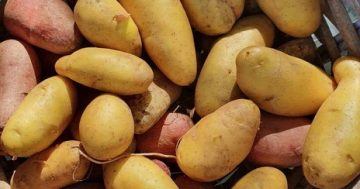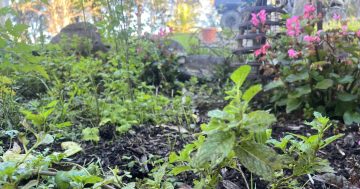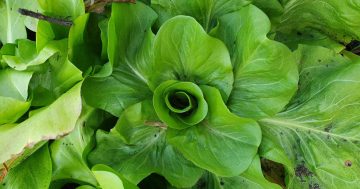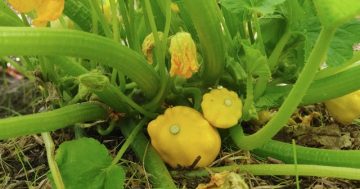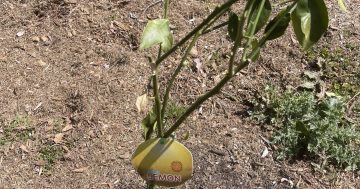Some call it the quickening, some call it sprinter but I call it a bit bloody weird this weather hey!
It’s getting warmer and wetter, which has the feel of the sub-tropics along many parts of the far south coast of NSW, so have you thought about growing food that may not traditionally belong in your climate zone?
In Permaculture there is a set of principles that guide you through the thinking of how to tackle the many issues of living sustainably in the challenging world of living well.
David Holmgren,co-founder of Permaculture, has come up with 12 basic ones to follow.
Observe and Interact – this 1st principle is all about taking note of what is happening around you. Using nature as a guide, then taking action to integrate what you have observed into improving how to live on your property, in your house, in your neighbourhood or community.
In my neighbourhood there are tried and true vegetable and fruit producers who have experimented with growing sub-tropical plants with surprising and delicious results!
Sometimes it’s come about through a simple happy accident – the seed of an avocado or mountain pawpaw that has gotten away in the compost heap, both of which have a seed that doesn’t break down easily.

Photo of banana surrounded by marigolds on right, corn, beans and zucchini at the back, eggplant to the left on deep mounded and mulched beds.
My intrepid community growers are trying Cavendish bananas, small golden pineapples, red and orange fruiting tamarillos, macadamia nuts, sweet potato and avocados – all bring bragging rights to the over the fence, food trade in these parts.
Sub-tropical plants love warmth, light, well drained soils, lots of organic matter and moistness most of the time.
I live in the coastal principality of Tanja on the far south coast of NSW, so my soils are a bit sandy in places, have lots of decomposed basalt and quartz and there’s quite a bit of a clay component too, but it’s been ravaged by clearing and mining, so the topsoil is basically none existent.
I have had to add quite a lot of goodness to the vegetable patch to get my “subbys” growing well.
If you do decide to grow them, they are going to need a sheltered area, look for the microclimate that may have formed in your garden. It will be a warm, sunny position, often a place the grass or weeds have taken off and maybe where moisture pools a bit more than usual.
They will need good composted manures like chicken or cow and regular feeding with liquid fertilizers and good quantities of mulch. Regular watering will be needed so you could try using your grey water on them – bananas perform particularly well at the end of a grey water outlet.
Here are just a few subbys that I’m growing that you could try at your place:

Photo: pineapples, oakleaf lettuce, spring onions, rocket, kale and the strappy plant up the back is sugar cane!
Pineapple – I planted tops from organic pineapples I bought last summer, kept safe under plantings of lettuce and rocket through the ‘harsher’ winter temps.
Sugarcane – I was given a stalk cutting last year in October, it’s growing extremely well in a hot, wet spot in the garden right beside a cement slab that retains the sun’s warmth. I’ve no idea what to do with it just yet – I just love telling people that it’s growing!
Tamarillos – I have two large trees that have given me good crops for nearly two years now, they also provide good shelter from the sun in summer in my little open garden. Seedlings are now appearing from dropped fruit so they will be my replacement plants in a year or so, as tamarillos only have a lifespan of 3-5 years.
Yacon – or Chilean ground apple. It’s a tuber that has a crunchy sweet taste and very easy to grow in our area. I use it diced in salads, but you can cook it too – it is usually harvested in Autumn after the tops have died down, but you can ‘bandicoot’ the tubers throughout the growing period.
Ginger – slightly harder to grow, but still worth trying! It dies back in winter down here and needs warm to hot, boggy type growing conditions. You need to dig it up to get to the tubers, so try growing it in an easy to get to position.
Turmeric – it has an awesome sweet scented flower and looks a little like a small canna lily or ginger in growth habit. Lots of people are having great success with this little rhizome in our area. Considered the new ‘superfood’ by many, it is delicious used as you normally would in anything spicy. It should be well washed then grated or blended into the preparation of your meal.
Passionfruit – do not buy a grafted passionfruit! Search for the grown from good seed type as the grafted ones are a terror in the garden if the rootstock gets away on you. I have a black passionfruit that I bought locally that is doing very well. You could also try banana passionfruit, panama gold or panama red for a different sweeter flavour.
Macadamia nut – I have a small tree (macadamia tetraphylla) that seems to be flourishing. I’ve also planted cuttings from a neighbour’s tree that I know is a good producer. This type of macadamia are self pollinators, but you may need to have other flowering plants like some of our natives, such as grevillea or wattle, or exotics like geraniums or lavender, that flower through autumn and winter to attract pollinators.
Avocado – I’ve decided to plant all the seeds I can! Can you imagine what the home garden environment would look like if everyone planted every seed from an avocado they have eaten? They would be the best weed tree ever in my opinion!
Other plants you may consider – kumera (sweet potato), custard apple, ice cream bean tree, babaco, guava, jaboticaba and cherimoya…great names hey, have fun exploring those plants!
Most sub-tropicals need extra care, especially when young and establishing, so if you live in a frost pocket, or have windy conditions regularly, here are a few ideas that will help them along the way.
Shelter belts of thick evergreen shrubs or small trees on the southern to western side of the garden helps to keep the cold winds off.
If you have the space, plant sub-tropicals on the northern side of the house, using the house itself as a heat-bank for the plants. Just remember that most sub-tropicals are evergreen, so take the shade they will make throughout the seasons into consideration when planting out.
You may need to prune them low to keep the shade to a minimum in winter. Just remember you can’t prune a banana!

Kathleen McCann
Keep up the watering throughout winter! The far south coast does have regular dry periods, and the cooler months are often one of them.
It’s really important to keep the soil moist for subbys. Even if it has rained, it is good to test the soil regularly to see if they need a drink.
Having a good amount (at least 10cms thick but up to 20cms) of mulch or straw, composted woodchip or composted sawdust will help.
If you do get frosts in your area, water in the morning to allow for drainage throughout the day.
Predicting when frost will occur is once again the principle of Observe and Interact.
If the sky is clear at night, if there is no breeze and you can feel a definite steep drop in temperature during the settling evening, then usually a frost will come.
It’s a good idea to keep on noticing the weather trend right into springtime as we can often get the rogue frost that can damage not only the subtropical plants but the newly flowering and fruiting ones in our vege patch or orchard.
If you think a big frost may damage your plant, you can try putting a blanket over the top of it, if it is small enough or around the plant if it’s higher. Try using stakes underneath to keep the blanket off the foliage. The blanket can be light wool, hessian or shade cloth and I recommend leaving it there till mid morning after the frost has evaporated.
Sometimes you may need to protect your sub tropicals in the same way during the hottest times of the year too – especially when we get those awful over 35C hot westerly wind days. But this time leave the blanket on during the hottest part of the day.
So there’s something for you to chew on while you’re contemplating whether to wear the woolly jumper, the cotton cardie, or both today.
I urge you, have a go with subbys!
You just might be pleasantly surprised at the delicious outcome.
Next time I’ll talk about all things spring, what goes where, some issues to look out for and how to make some simple and effective liquid fertilizers and composts.
Play, plant and go well my gardening friends.
Pic 1: Banana surrounded by marigolds on the right, corn, beans and zucchini at the back, eggplant to the left on deep mounded and mulched beds.
Pic 2: Pineapples, oakleaf lettuce, spring onions, rocket, kale and the strappy plant up the back is sugar cane!







